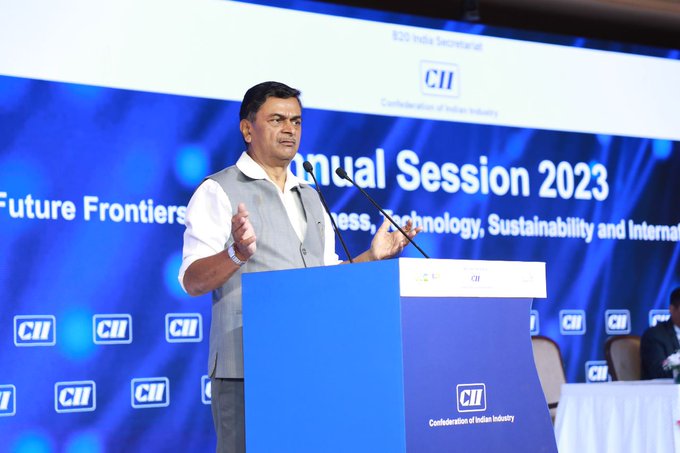
Andalib Akhter / New Delhi
Union Minister of Power and New & Renewable Energy Raj Kumar Singh has said that by 2030, 65% of India’s energy capacity will come from non-fossil sources.
Addressing CII Annual Session 2023 Singh said that energy infrastructure in India will require partnership between government, industry, and academia to develop the country’s capacity and storage of renewable energy and expand India’s research and development capabilities.
“The addition of capacity is a challenge, but also an opportunity because we are one of the fastest growing countries with one of the largest energy demand. So, if there is a market anywhere – it is here,” he said.
The session focused on the Government’s push for the adoption of renewable energy and the need for creating green energy alliances and institutions.
The Minister elaborated on the trajectory for energy transition planned by the government to achieve its commitment for Net Zero. “We have lowest cost of production of renewable energy,” he added. 45% of electricity which is consumed is already green. By 2030, 65 per cent of India’s power capacity (energy) will be from non-fossil sources.
Mr Singh said about 15,000 MW hydropower capacity was under construction, and another 30,000 MW was needed. This is because hydropower was essential for balancing the renewable energy requirement of the country.
Mr Kamal Bali, Chairman, CII (SR) and President & Managing Director, Volvo Group India in his welcoming remarks thanked the minister for making renewable energy, which is an absolute necessity for lowering the carbon footprint, seamlessly available at an affordable price to both industry and society at large.
He said the National Green Hydrogen Mission aims to have largest green hydrogen capacity in the world. “We will become the champion in Green Hydrogen production.” The Union Cabinet approved the National Green Hydrogen Mission with an outlay of Rs 19,744 crore from 2023-24 to 2029-30.
The CII Annual Session was held on 24th and 25th May 2023 with the theme “Future Frontiers: Competitiveness, Technology, Sustainability, and Internationalization”. It brought together eminent leaders, strategic thinkers, leading economists, young icons from various fields and captains of Industry to share their perspectives across nine major tracks and saw participation from almost 2,500 delegates.
